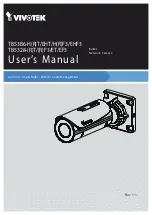
4-3
Catalyst 6500 Series Switch Software Configuration Guide—Release 8.7
OL-8978-04
Chapter 4 Configuring Ethernet, Fast Ethernet, Gigabit Ethernet, and 10-Gigabit Ethernet Switching
Default Ethernet, Fast Ethernet, Gigabit Ethernet, and 10-Gigabit Ethernet Configuration
Note
Port negotiation does not involve negotiating port speed. You cannot disable port negotiation with the
set port speed
command.
Port negotiation exchanges flow-control parameters, remote fault information, and duplex information.
Configure port negotiation with the
set port negotiation
command. Port negotiation is enabled by
default.
Note
When you enable port negotiation on the 16-port 10/100/1000BASE-T Ethernet modules, the system
autonegotiates flow control only.
The ports on both ends of a link must have the same setting. The link will not come up if the ports at
each end of the link are set inconsistently (port negotiation is enabled on one port and is disabled on the
other port).
Table 4-1
shows the four possible port negotiation configurations and the resulting link status for each
configuration.
Default Ethernet, Fast Ethernet, Gigabit Ethernet, and 10-Gigabit
Ethernet Configuration
Table 4-2
shows the Ethernet, Fast Ethernet, Gigabit Ethernet, and 10-Gigabit Ethernet default
configuration.
Table 4-1
Port Negotiation Configuration and Possible Link Status
Port Negotiation State
Link Status
Near End
1
1.
Near End refers to the local port.
Far End
2
2.
Far End refers to the port at the other end of the link.
Near End
Far End
Off
Off
Up
Up
On On
Up Up
Off
On
Up
Down
On Off
Down
Up
Table 4-2
Ethernet Default Configuration
Feature
Default Value
Port enable state
All ports are enabled
Port name
None
















































